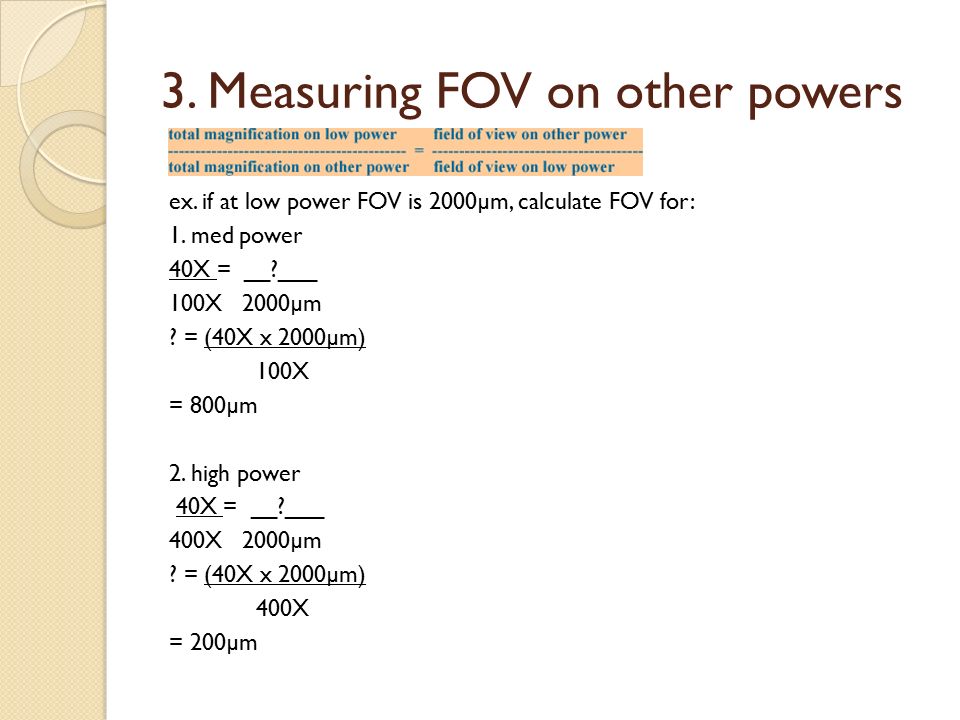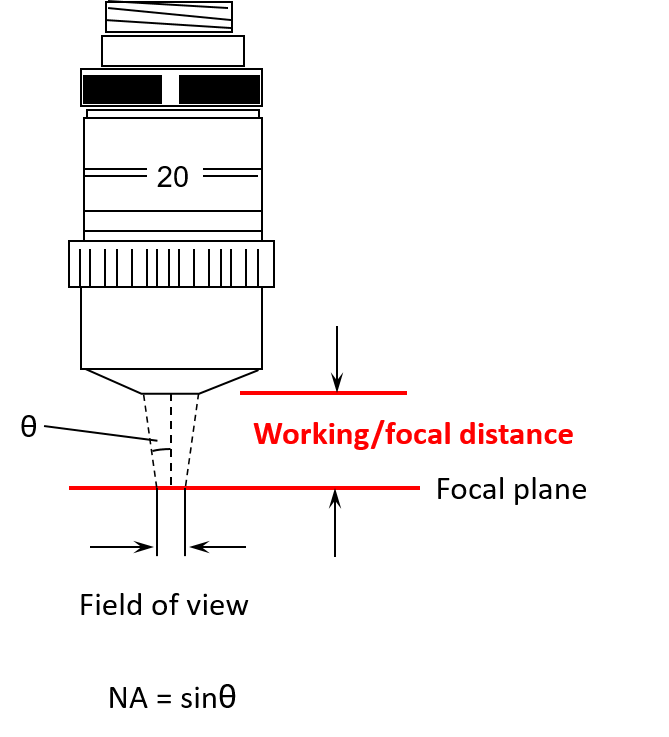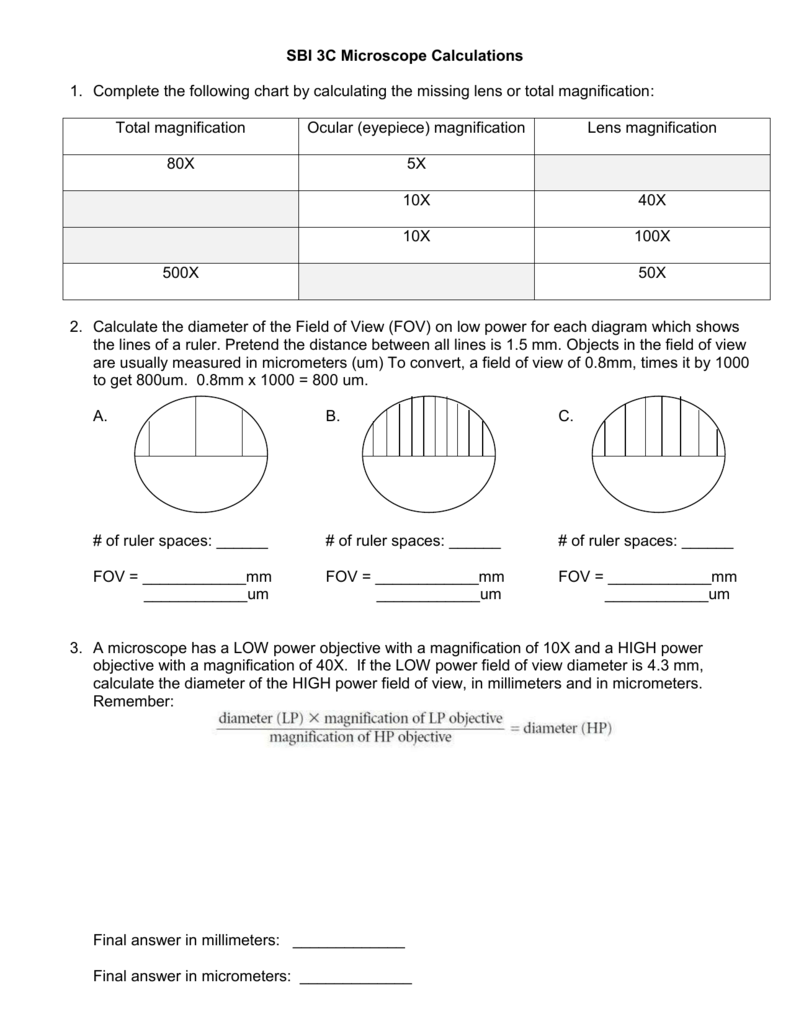Calculate Working Distance Microscope
In the case of objectives designed to be used without coverslips, the. On increasing the magnification, the walking distance reduces.

Microscopy Can Become Confusing When Calculations And Conversions Come Into Play A 5e Lesson On Enquiry Based Learning Will E Microscopy Cell Structure Lesson
It is defined by the equation:

Calculate working distance microscope. It is the distance depicted by u, in the well known lens equation; The numerical aperture formula defines it as: Microscope objectives are generally designed with a short free working distance, which is defined as the distance from the front lens element of the objective to the closest surface of the coverslip when the specimen is in sharp focus.
Generally, working distance decreases in a series of matched objectives as the magnification and numerical aperture increase (see table 2). Microscope objectives are usually designed with short working distances. Calculate the focal length of a 40× infinity microscope.
From the requirement that m12 = 0 we can calculate w: •the current depends exponentially on the distance d. Looking at the diagram below, we can see that the dfov for this particular microscope is 5 mm.
This means that the working distances calculated here. Where, d is the depth of field, λ is the wavelength of the light from the light source, n is the refractive index of the medium between the specimen and the objective lens, and na is the numerical aperture of the objective lens. It is not the same as the focal length of the lens, although high magnification requires a small focal length of the objevtive lens, and this gives rise to a small working distance.
•this (approximate) equation shows that the tunneling current obeys ohm’s law, i.e. The distance between the coverslip of the slide and the front lens of the objective is called the working distance. In general, the objective working distance decreases as the magnification and numerical aperture both increase.
Calculate the focal length of a 10× finite microscope objective if the microscope tube length is 160 mm. Zoom microscopes have a fixed working distance throughout the zoom range. The distance across the center of the circle is referred to as the diameter of field of view (dfov).
Higher the resolution of the microscope. Working distance is the distance between the objective lens and the specimen. Microscope objectives are generally designed with a short free working distance, which is defined as the distance from the front lens element of the objective to the closest surface of the coverslip when the specimen is in sharp focus.
If lenses are specified with a back working distances of x mm, many designers will just make the back working distance be x + some small margin to. Microscope objectives are generally designed with a short free working distance, which is defined as the distance from the front lens element of the objective to the closest surface of the coverslip when the specimen is in sharp focus. Install the hood and the minimal working distance goes down to 3.7 (93.6mm).
R=l/2·na (μm) l=0.55µm is often used as the reference wavelength resolving power (r) the minimum detectable distance between two image points, As you increase the magnification the working distance decreases dramatically. To calculate the dfov, you will need to place a transparent ruler on the microscope stage and measure the dfov under low power.
Working distance is the distance between the front of the microscope objective lens and the surface of the specimen or slide coverslip at the point where the specimen is completely in focus. The lens will be extremely close to the specimen! At low magnification the working distance is relatively long.
As a general rule working distance decreases and total magnification increases due to the higher numerical apertures associated with high power objectives. •for a typical value of the work function fof 4 ev for a Using this calculation shows that the sigma 105 os lens' working distance is about 5.6 (141.6mm).
It decreases as magnification, resolution and numerical aperture increase. When using a 100x objective lens (1000x total power) your working distance might only be 0.04mm (40µm). The current iis proportional to the voltage v.
This inverse relationship basically means as you increase the. Microscopes working distance (w.d.) the distance between the front end of a microscope objective and the surface of the workpiece at which the sharpest focusing is obtained. Objectives intended to view specimens with air as the imaging medium should have working distances as long as possible, provided that numerical aperture requirements are satisfied.
The calculator can perform calculations of the third value from any two other values. 1/f = 1/u + 1/v. This makes it hard to work under the microscope.
The working distance (w.d.) is determined by the linear measurement of the objective front lens to the focal plane. The working distance is the distance from the front of the lens to the focal plane. In the case of objectives designed to be used without coverslips, the working distance is determined by the linear.
The working distance and the amount of vertical motion of the microscope will also affect the maximum specimen height. The stage working distance is the vertical distance. As the magnification of the objective lens increases the distance between the front lens of the objective and the coverslip on the slide which covers the specimen also decreases.
Working distance and parfocal length. The working distance of a microscope is the gap between the slide and the bottom of the microscope lens. To calculate, provide any two values and click or tap the calculate button.
The numerical aperture is defined as the ability of a lens, or grouping of lenses such as a microscope objective, to collect light and resolve image details at a fixed object distance. To achieve a greater magnification of an object you must check that the working distance is large.

Pin On Telescope

Microscope Task Cards Grades 5-10 Set Of 41 Cards Task Cards Science Teacher Resources Teaching Biology

Microscope Task Cards Printable And Digital Distance Learning Task Cards Scientific Method Task Cards Framed Words

To Calculate The Resolution Of Lensfree Microscope The Distance Between Object And Sensor Is Very Small Which Equation Is Used

Microscope Calculations Field Of View Depth Of Field Numerical Aperture Dover Motion

Types Of Microscopy In 2021 Microscopy Scanning Electron Microscope Biology Revision

Full Set 14mp 3 In 1 Tv Hdmi Usb Industry Digital Microscope Camera With Long Distance C-mount Universal St Digital Microscope Camera Digital Microscope Usb

Biological Drawings And Microscope Calculations Examining Protists - Ppt Download

Introduction To Microscopy Virtual Lab - Distance Learning Microscope Lab Distance Learning High School Biology Classroom Biology Classroom
How To Calculate The Magnification Of A Microscope

Working Distance Optical Profilometer Training

Calculator Clip Art - Calculator Vector Image Calculator Free School Supplies Clip Art

Microscopes Magnifications Resolutions And Calculations Light Microscope Uses

Microscope Task Cards For Middle And High School Teaching Biology Homeschool Science Experiments Life Science Classroom

Microscope Calculations Worksheet

Pin On Tools

35x-90x Trinocular Stereo Zoom Big Table Stand Microscope With 48mp Microscope Camera 05x Auxiliary Objective Lens Lens Stereo Led Ring Light
How To Calculate The Magnification Of A Microscope

Microscope Powerpoint And Notes Printable And Digital Distance Learning Teaching Biology Teacher Teaching Science